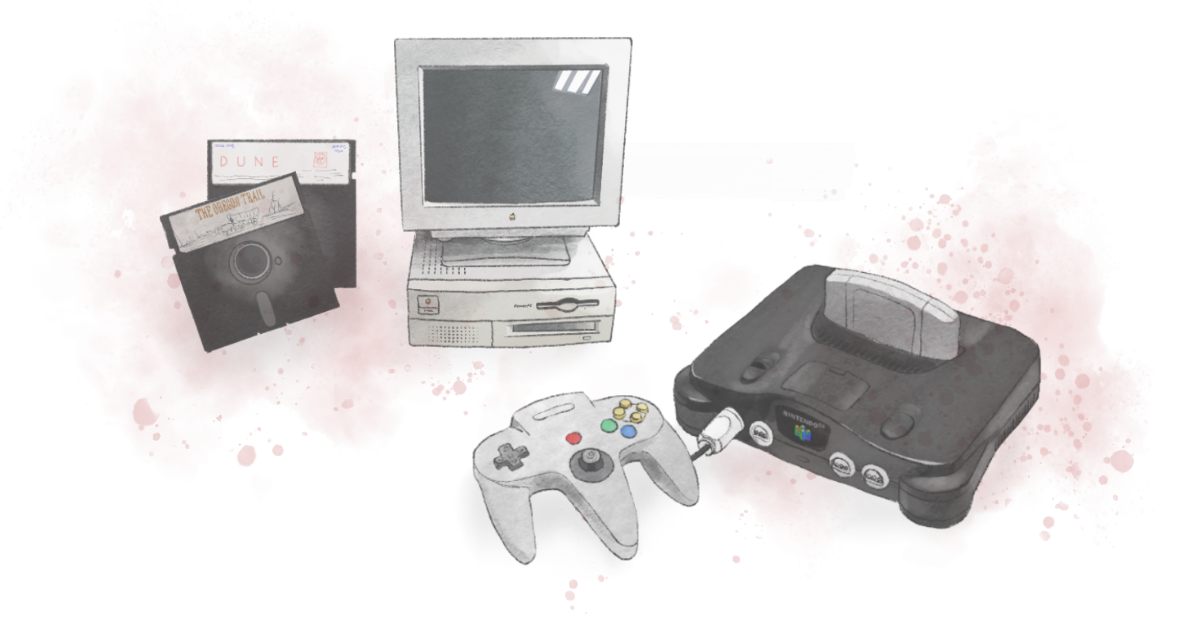
75 Years of Design | The 1990s
Brooke Cleaver June 30, 2025
In honor of our 75th anniversary, we’re taking a closer look at the history of interior design and how Lafayette Interior Fashions has evolved alongside it. If you’re just now joining us, welcome. Each month, we’re diving into a different era and exploring its styles, cultural shifts, and milestones.
This month, we’re logging onto the 1990s: an era defined by dial-up tones, Napster, and reality TV. Homes revolved around technology, antiques became mainstays, and color palettes took a moody turn. From bean bags to slipcovers, it was a decade of comfort, contrast, and quiet reinvention.
A Blank Slate
For many, the ‘90s were more than the start of a new decade. They were the start of a new chapter. After nearly four decades of intense rivalry and diplomatic uncertainty, the world was finally changing. The Cold War had ended, the Iron Curtain had lifted, and—for the first time in a long time—the future looked bright. A new kind of sound was making its way across radio stations, introducing the world to a raw subgenre of rock called grunge. Girl power was on the rise thanks to female-led groups like Destiny’s Child, TLC, and the Spice Girls. Shows like The Real World were changing how we viewed reality, while tools like the World Wide Web were changing how we interacted with the home.
The Rise of the McMansion
Following the ‘more is more’ attitude of the 1980s, the dot-com era continued to build bigger and “better” homes, often styled after traditional mansions. These larger-than-life homes, otherwise known as McMansions, first appeared in the suburbs of California in the ‘80s but gained popularity around the same time NSYNC dropped their first album. Borrowing from multiple architectural styles at once, they often featured a mix of ornaments, columns, and window frames. But the most defining feature of the McMansion, hands-down, had to be its foyer. Most large tract homes featured two-story entryways, sometimes with an oversized chandelier or two. While the average home still hovered around 2,000 square feet, these suburban behemoths offered more than 3,000.
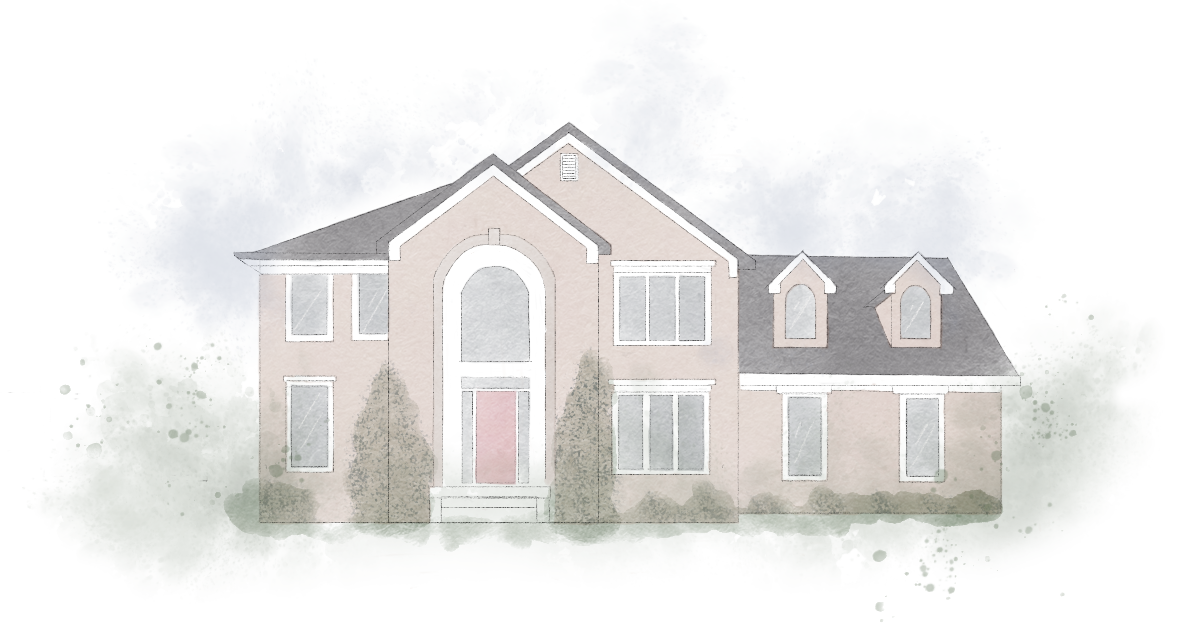
Technology Takes Over
Homes weren’t the only thing getting the supersized treatment, though. As floorplans extended, so did the number of screens per household. By the mid-‘90s, the average home had at least two television sets—one in the living room and another in the basement. By the end of the decade, more than half of U.S. households owned a personal computer. As our relationship with technology evolved, so did our relationship with the home. New pockets of entertainment started to emerge—ones carved out for watching, working, and playing.
Most family rooms now centered around a large TV, where everyone could spread out and unwind after a long day of school and work. But it wasn’t just the TV itself that you had to contend with. It was everything else that went along with it: CD players, VCRs, sound systems, Nintendo 64s, and PlayStations. All of these entertainment must-haves needed a new place to go. Cue the deep pine and birch armoires. Not only did they hide clutter and house your Friday night essentials, but they did so with style.
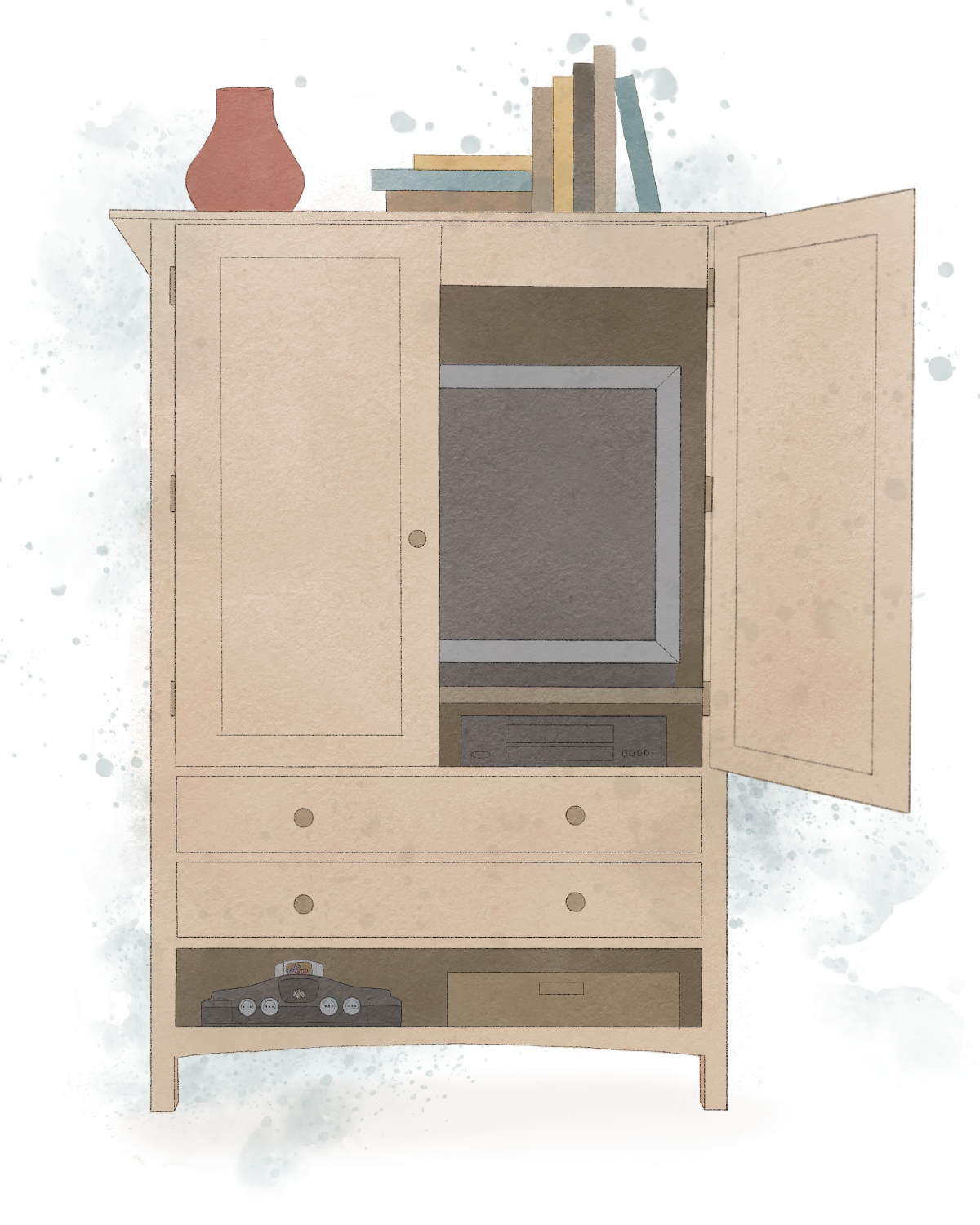
Furniture Conforms to the Future
Of course, the armoire wasn’t the only thing to get a second lease on life. With the rise of home offices and computer stations, you also saw the rise of furniture specifically designed for sitting. And none were as infamous as the Aeron chair.
What started as an elderly-friendly lounge chair—meant to contend with the likes of La-Z-Boy—quickly transformed into an ergonomic office chair. Designed for those who sit more than they stand, the Aeron became an overnight success, transforming offices across the country. But it wasn’t the only piece of furniture to make a comeback. The bean bag chair—a ‘70s classic—also got a surprising makeover. The Memo Bean Bag Chair by Inflate and Ron Arad allowed people to control how much air entered and left the bag, making it as comfortable as it was customizable. The future was here. But this time, it had lumbar support.
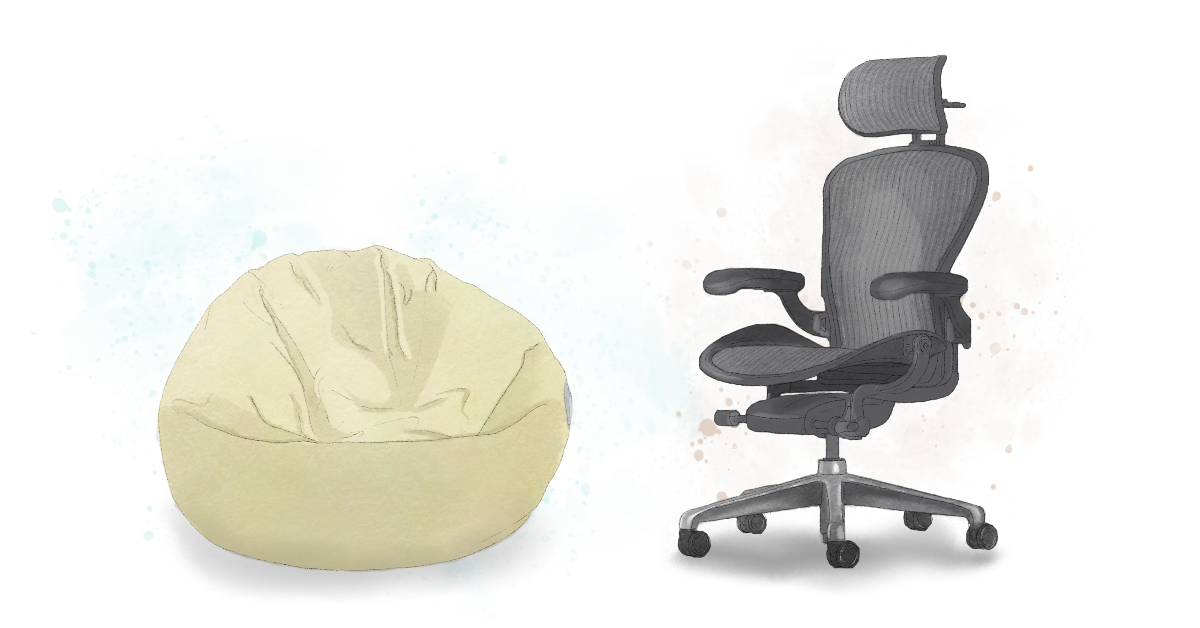
What’s Old Becomes New
But not all furniture was headed towards the future. At the same time, a new style was emerging in the heart of Santa Monica, one that would inspire countless households across the nation: Shabby Chic. Born from the mind of Rachel Ashwell, who owned a store by the same name, this burgeoning new style embraced all that was clean, simple, natural, and textured. She promoted the use of thrift-store finds and antiques and often styled homes with white slipcovered sofas, vintage textiles, and worn-painted furniture. With a little help from Oprah, who featured Ashwell on her show, the look spread from coast to coast and quickly became an overnight sensation. It was soft, romantic, and lived-in—everything the ‘80s was not.
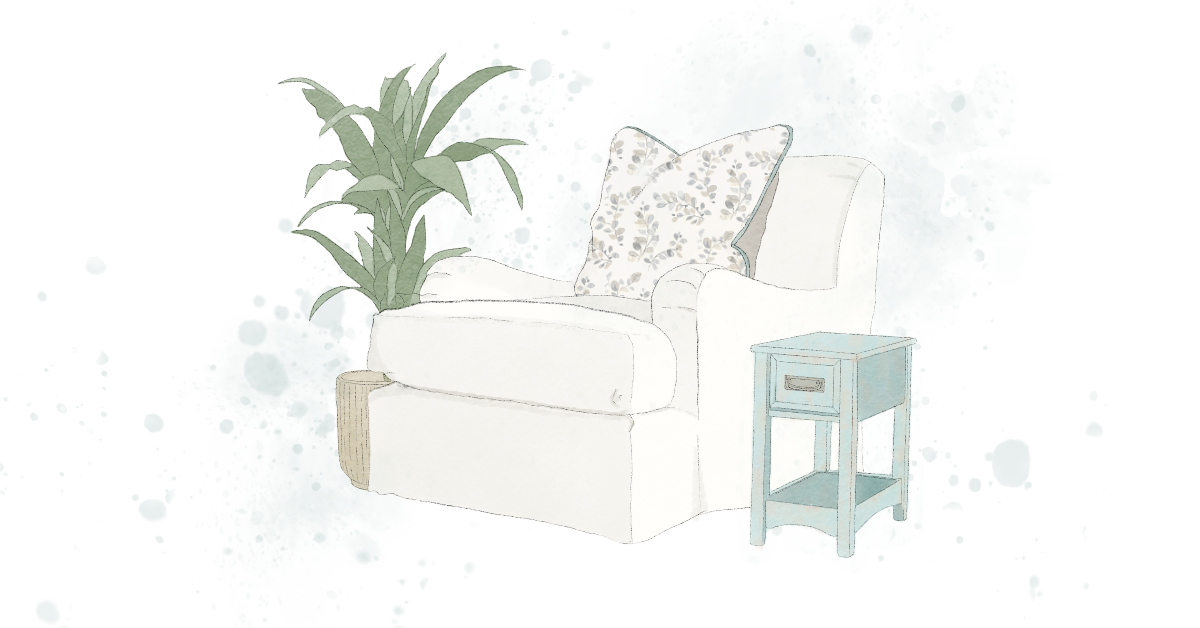
Color Takes a Step Back
The bright pastels and punchy primaries of the Miami Vice era slowly gave way to hues that felt a little more grounded, muted, and real. With grunge taking over airwaves and coffeehouses taking over freeways, earth tones like beige, brown, and red started popping up everywhere. These moody hues, inspired by the Pacific Northwest, offered a welcome retreat from the bold tones and geometric forms of the previous decade, while softer shades like gold, sage, and putty added a sense of calm. By the end of the millennium, the palette had gone mainstream. Even big box stores were dressing their displays in greens, golds, and browns.
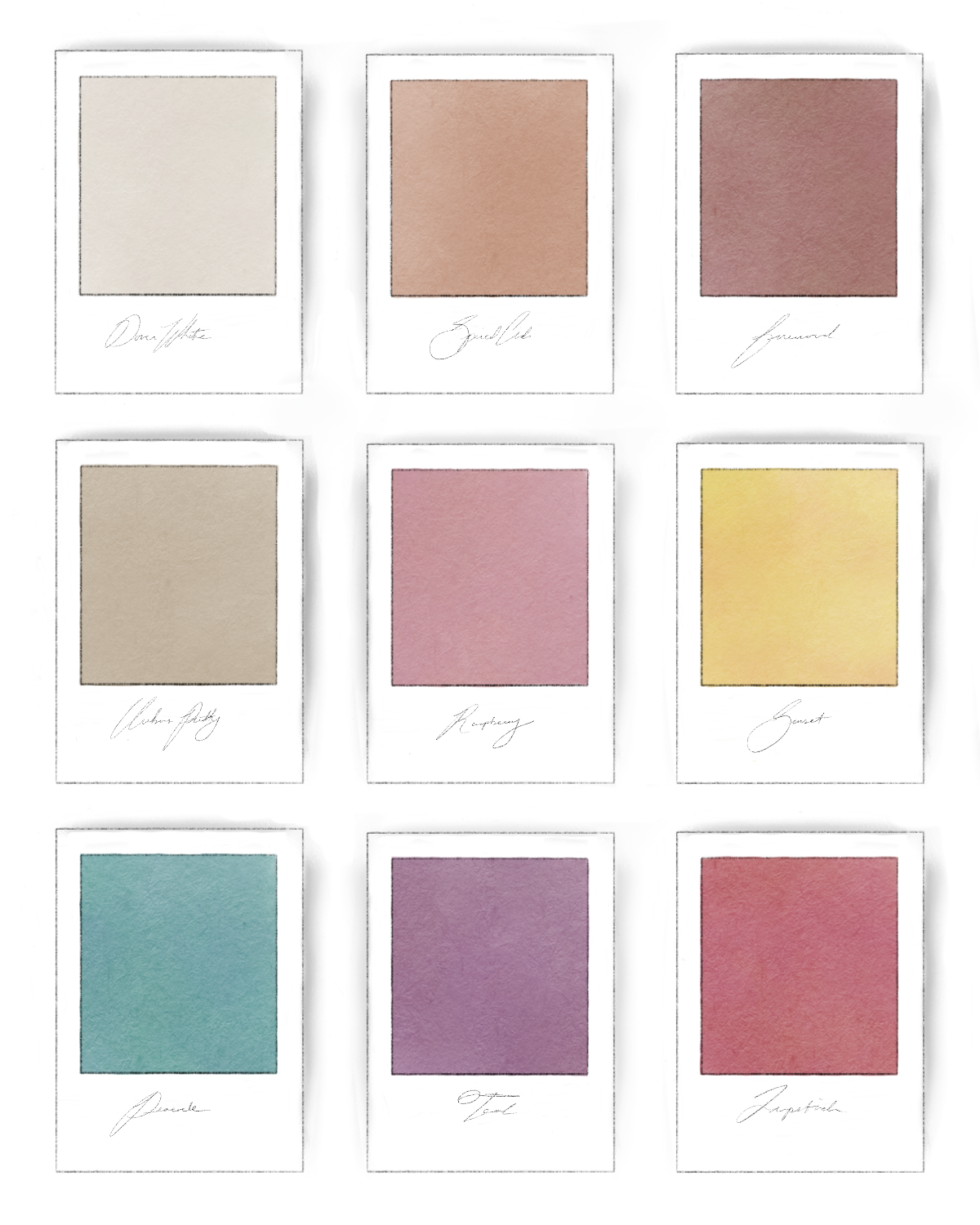
Lafayette Weathers its Hardest Storm
By the end of the 1980s, Lafayette had grown from a modest, one-man operation into one of the nation's most respected window treatment manufacturers—thanks, in large part, to its founder, Joe Morgan Sr.. But as the decade came to a close, Lafayette faced its most challenging hurdle yet. In December of 1989, Joe Morgan Sr. passed away, leaving behind his wife, Lucille, and four children. Denny, Toni, and Joe Morgan stepped forward to pick up the reins, determined to continue their father's legacy. Lafayette was about to enter a new decade. This time, under new leadership.
Recognizing the need for unity, the three started plans for a new facility: one that would bring production, customer service, and management together under one roof. In 1992, construction of Lafayette's main campus was completed. And a new chapter was set to begin. Drapery sales soared throughout the '90s while interest in their newest offering—custom wood shutters—steadily grew. Success in the East inspired Lafayette's regional managers to expand again, this time in the South. With two new branches and a main facility now complete, the future was looking bright. That is, until the spring of 1994.

On April 27th, an F4 tornado tore through Lafayette's newly constructed campus, killing one and injuring two. The following morning, dozens of employees were greeted to the impact of the previous night's storm. The tall metallic structure that had once been their second home was nothing more than a pile of rubble and twisted debris. Yet, even in the face of disaster, Lafayette's leadership remained strong. Dealers, vendors, and community members rallied around them, offering their time, resources, and support. By October of that same year, Lafayette reopened as a fully operational facility.
Towards the end of the decade, Lafayette launched one last expansion, this time in the West, and opened a regional office in California. Lafayette was determined to keep growing, no matter what.
Final Thoughts
The 1990s weren’t just the start of a new decade. They were the start of a new chapter. For interiors. For Lafayette. And for the world at large!
What were some of your favorite moments from the dot-com era? We’d love to hear from you. Join us over on Instagram, Facebook, and LinkedIn to continue the discussion.
Lafayette Interior Fashions is a family-owned, to-the-trade manufacturer of blinds, shades, draperies, and other custom-crafted interior fashion products. To learn more about our products, find a local dealer near you.







